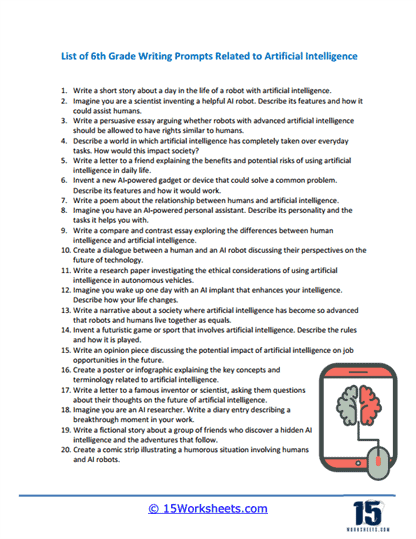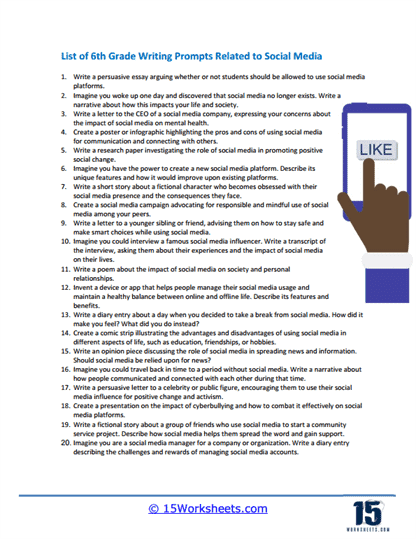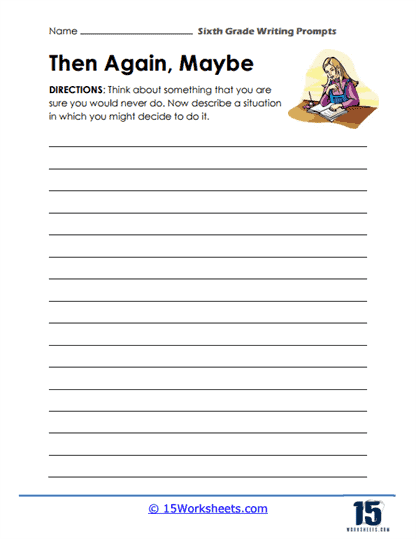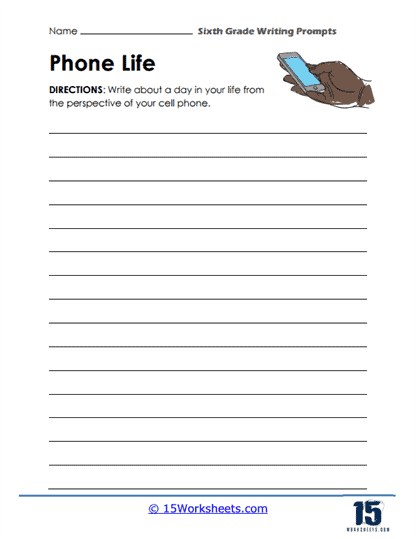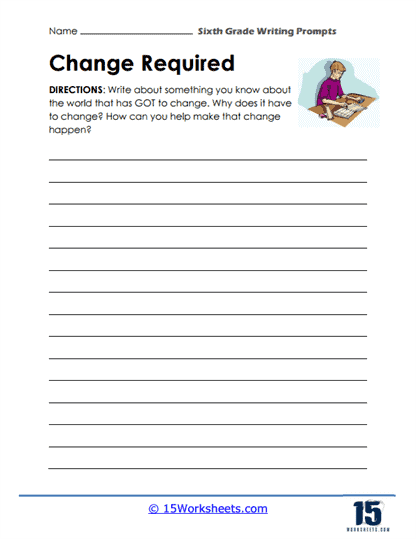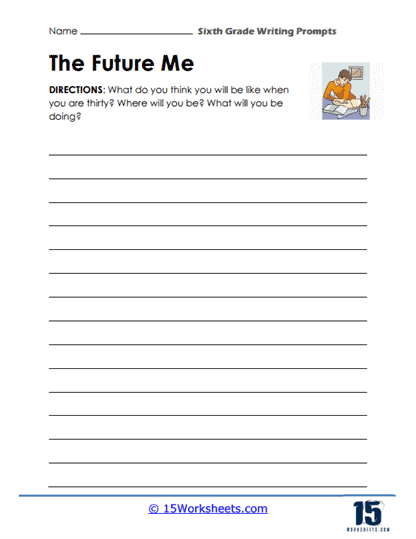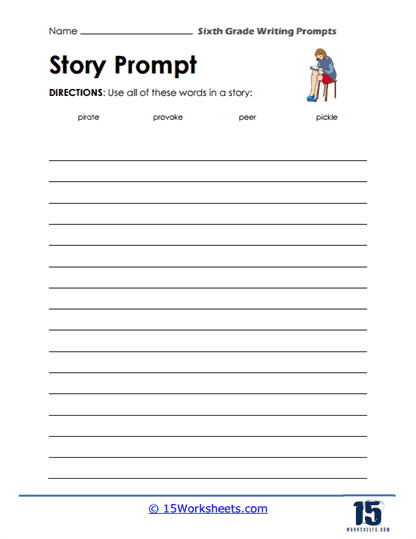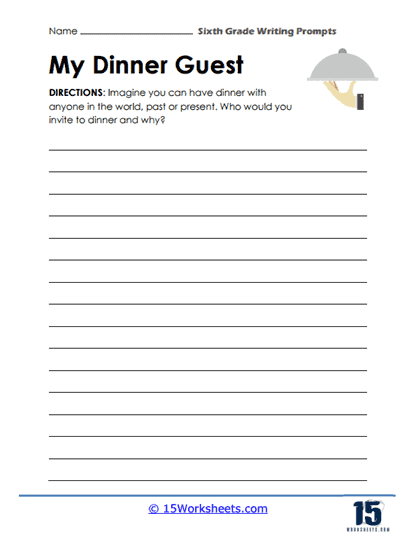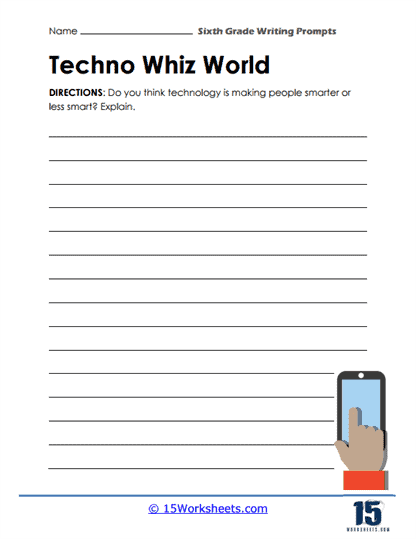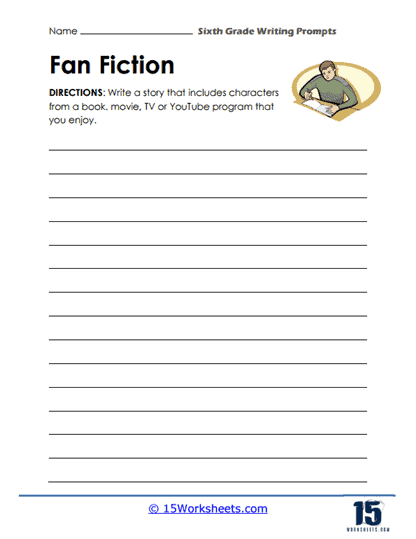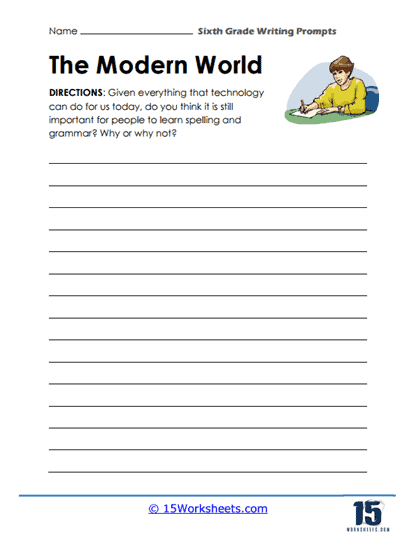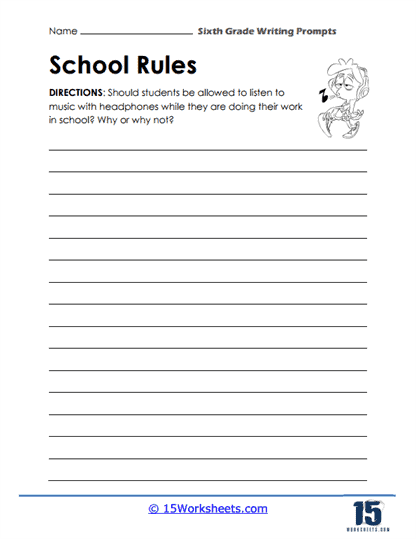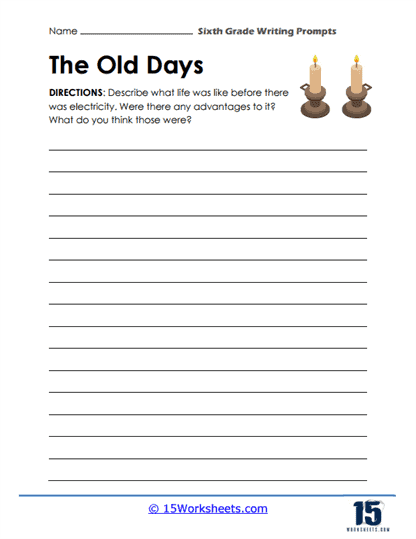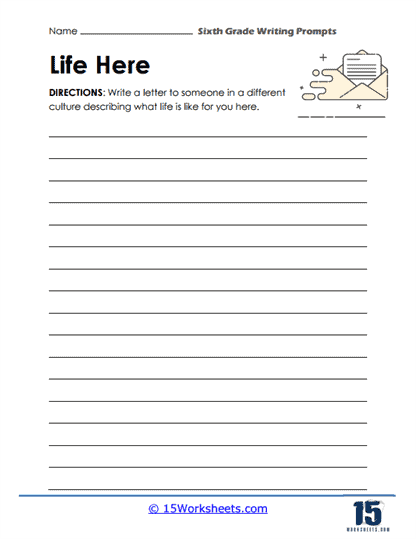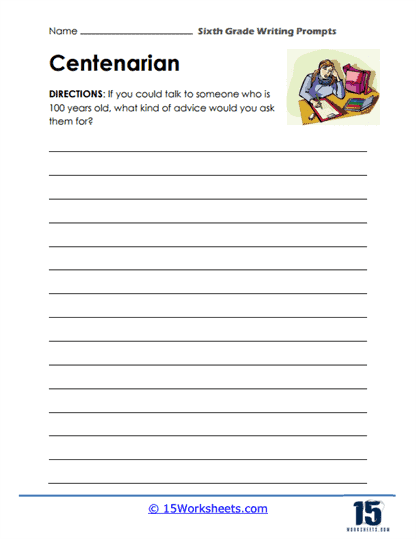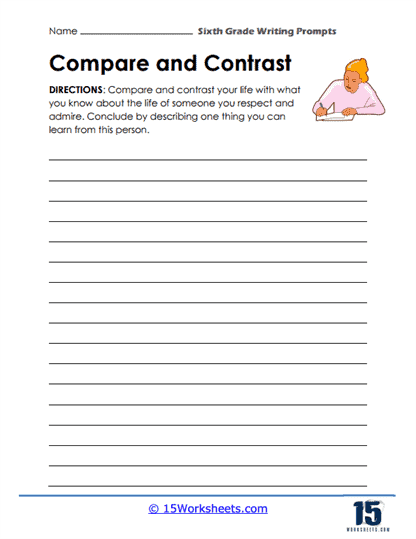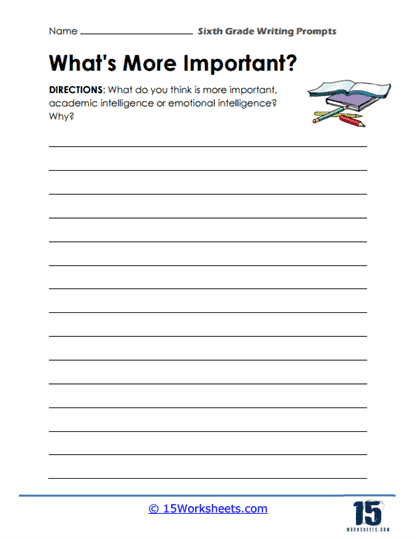6th Grade Worksheets
All About These 15 Worksheets
The goal of these prompts is to help students improve their writing skills, learn how to organize their thoughts, use proper grammar and punctuation, build their vocabulary, and learn how to construct coherent arguments or narratives. They can also help students prepare for standardized tests that often require written responses to prompts. Everything here is leveled for 6th grade students including topics and wording.
How to Answer 6th Grade Writing Prompts
These are the steps you will need to take to write an awesome response to any of these worksheets:
1. Be Clear On Your Task
- Read the prompt carefully at least twice.
- Underline or highlight keywords in the prompt that indicate what you should do (for example: explain, describe, argue, compare, etc.).
- Make sure you fully understand what the prompt is asking. If necessary, rewrite the prompt in your own words.
- If you’re unsure about anything, ask your teacher or a classmate for clarification. Don’t proceed until you’re completely clear about what you need to do.
2. Brainstorming Ideas
- Set aside some time to think about the topic. Let your mind wander freely and jot down all the ideas that come to you.
- Consider different angles you can approach the topic from.
- If the prompt is open-ended, think about a topic that you’re interested in and have some knowledge about.
- Create a mind map or a list of your ideas, making sure each one is relevant to the prompt.
- Choose the best idea, or a combination of ideas, that best answers the prompt.
3. Planning and Outlining
- Develop a thesis statement or main idea based on your chosen topic. This should be one sentence that clearly states what your piece will be about.
- Plan your writing using an outline. Divide your work into three main sections: introduction, body, and conclusion.
- In the introduction, plan to introduce your topic and thesis statement.
- In the body, plan to develop your main idea with supporting details. Each paragraph should have one main point.
4. Writing the First Draft
- Begin with the introduction. Grab your reader’s attention with an interesting statement, question, or anecdote.
- Write the body paragraphs. Use your outline as a guide. Develop each point in a separate paragraph.
- Finish with your conclusion. Summarize your main points and re-emphasize your thesis.
- Don’t worry too much about making mistakes or sounding perfect in your first draft. The important thing is to get your ideas on paper.
5. Revising Your Draft
- Review your draft. Does it answer the prompt and stick to your thesis?
- Check the organization of your work. Does it have a clear beginning, middle, and end?
- Consider the content. Are your arguments persuasive? Are your descriptions vivid?
- Think about style and tone. Are they appropriate for the assignment?
- Make necessary changes. This might mean adding, deleting, or moving sentences or entire paragraphs.
6. Proofreading and Editing
- Check for spelling, grammar, and punctuation errors.
- Check the format. Are you using the correct margins, line spacing, font size, and style?
- Read your work aloud. This can help you catch awkward phrasing or run-on sentences.
- Consider having a classmate or teacher proofread your work. They might catch errors you missed.
7. Finalizing Your Work
- Make the necessary corrections identified in your proofreading.
- Re-read your work one last time to ensure it’s the best it can be.
- Congratulate yourself for completing your work! Remember, writing is a process that requires practice, so be proud of what you’ve accomplished.

